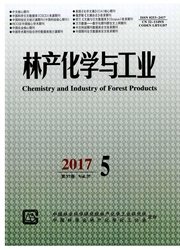

 中文摘要:
中文摘要:
单宁为高等植物的次生代谢产物,是相对分子质量为300到3 000的多酚类化合物,主要分为水解单宁和缩合单宁两大类.根据水解单宁结构特性的差异,又将其分为棓单宁和鞣花单宁.自然界中的某些微生物具有忍耐单宁的特性,甚至可以将单宁降解成具有一定生理或药理活性的小分子单宁或其衍生物.由于缩合单宁的分子结构复杂,对其微生物降解的研究远不及水解单宁深入.本文综述了近年来关于细菌和真菌降解棓单宁和鞣花单宁的研究情况,阐述了其降解机理,提出了微生物降解单宁需要解决的问题,可为单宁生物降解的进一步研究提供参考.
 英文摘要:
英文摘要:
Tannins are water-soluble polyphenolic secondary metabolites of higher plants with the molar mass from 300 to 3 000 . Hydrolysable and condensed tannins are the two major classes of tannins. There are two groups of hydrolysable tannins: gallotannins and ellagitannins on the basis of structural characteristics. In nature, some microbes are resistant to tannins, even capable of degrading tannins into low-molar-mass tannins and lots of derivatives which have marked biological and pharmacological activities. Gallotannins can be degraded more easily than ellagitannins which have complicated structures with the further coupling C-C bond. However, some bacteria and fungi from the ellagitannin-rich soil, leaves and tannery liquors can hydrolyze ellagitannins. Because of the complicated structures of the further coupling C-C bonds, both complex tannins and condensed tannins are harder to be degraded than gallotannins and ellagitannins in both aerobic and anaerobic environments. This review could provide much references for the further researches on biodegradation of tannins.
 同期刊论文项目
同期刊论文项目
 同项目期刊论文
同项目期刊论文
 期刊信息
期刊信息
